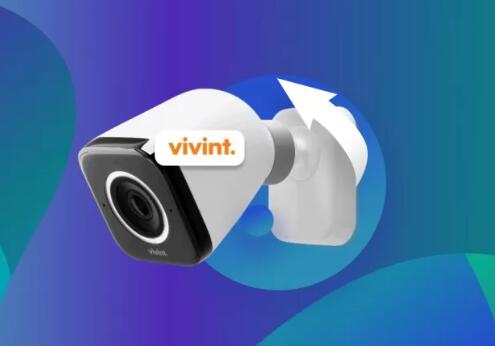Vivint provides a robust home security system that includes video monitoring. While these systems offer peace of mind, there may come a time when you accidentally delete important video clips. Fortunately, recovering deleted Vivint video clips is often possible, depending on your circumstances and the methods you use.
Vivint Video Storage
Before diving into recovery methods, it’s crucial to understand how Vivint stores video clips. Vivint uses cloud storage to save video footage from its cameras. When a video clip is deleted, it may be removed from your account but could still be recoverable under certain conditions.
How Vivint Stores Video Clips
Cloud Storage: Vivint’s video clips are uploaded to the cloud, allowing users to access footage remotely. Clips are typically stored for a specific duration, often ranging from 14 to 30 days, depending on your subscription plan.
Local Storage: Some Vivint cameras may support local storage options, such as microSD cards. If you have enabled this feature, video clips might be saved locally before being uploaded to the cloud.

Types of Clips
Live Clips: These are recordings made in real-time.
Event Clips: Footage triggered by specific events, like motion detection or alarm activations.
Scheduled Clips: Recordings set up on a schedule, allowing users to capture specific times of day.
Causes of Deletion
Understanding why video clips might get deleted can help you take preventive measures and strategize recovery. Common causes include:
Accidental Deletion: Mistakenly deleting clips while managing your library.
Storage Limits: Exceeding your cloud storage limit can lead to older clips being deleted automatically.
System Updates: Firmware or software updates may sometimes inadvertently affect saved clips.
User Error: Misconfiguring settings that lead to unintended deletions.
Recovery Options
Here are various methods to recover deleted Vivint video clips:
1. Check Vivint’s Cloud Storage
Step-by-Step Instructions:
Log In to Your Vivint Account: Use your credentials to access your Vivint dashboard on a web browser or the mobile app.
Navigate to the Video Section: Locate the section where your video clips are stored.
Check the Deleted Items Folder: Some systems have a “Recently Deleted” or “Trash” folder where deleted files are temporarily stored.
Restore Clips: If you find your deleted clips here, select them and choose the restore option.
2. Contact Vivint Support
If you can’t find your clips in the cloud storage, reaching out to Vivint’s customer support may help.
Step-by-Step Instructions:
Gather Information: Before contacting support, gather details such as your account information, the dates of the deleted clips, and any other relevant information.
Contact Support: Call or use the online chat feature to explain your situation. They may be able to assist you in recovering the clips or provide specific instructions.
Follow Their Instructions: Be sure to follow any recommendations given by support representatives.
3. Use Local Backups
If you have set up local storage on your Vivint system, you might be able to recover deleted clips from your microSD card.
Step-by-Step Instructions:
Access the microSD Card: Remove the microSD card from your Vivint camera.
Insert the Card into a Computer: Use a card reader to connect the microSD card to your computer.
Use Recovery Software: Download and install data recovery software (e.g., Recuva, EaseUS Data Recovery Wizard) to scan the card for deleted files.
Follow the Software Prompts: Use the software to recover any detected video clips. Ensure you save recovered files to a different drive to avoid overwriting other data.
4. Check Your Phone or Device
If you accessed or viewed the video clips on a mobile device, they may be saved in your device’s cache or memory.
Step-by-Step Instructions:
Check the Gallery or Photos App: Look through your phone’s gallery or photo apps for any saved video clips.
Use File Management Apps: Apps like Files by Google can help you explore device storage for any hidden or cached files.
Recover Deleted Files: If you have deleted files recently, some phones have built-in recovery options in their photo or file management apps.
5. Prevent Future Deletions
While recovering deleted clips is essential, it’s also vital to prevent future loss. Here are some strategies:
Regular Backups: Consider backing up important videos locally or using a secondary cloud service.
Adjust Storage Settings: Review your storage settings in Vivint and ensure you’re not exceeding limits that could lead to automatic deletions.
Educate Users: If multiple people have access to the account, ensure everyone understands how to manage video clips properly.
About us and this blog
Panda Assistant is built on the latest data recovery algorithms, ensuring that no file is too damaged, too lost, or too corrupted to be recovered.
Request a free quote
We believe that data recovery shouldn’t be a daunting task. That’s why we’ve designed Panda Assistant to be as easy to use as it is powerful. With a few clicks, you can initiate a scan, preview recoverable files, and restore your data all within a matter of minutes.
Subscribe to our newsletter!
More from our blog
See all postsRecent Posts
- How to recover deleted files in sd memory card 2025-07-15
- How to recover lost photos from sd card 2025-07-15
- How do you recover deleted files from sd card 2025-07-15

 Try lt Free
Try lt Free Recovery success rate of up to
Recovery success rate of up to









